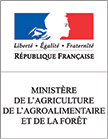
This summer I packed my bags with enough anti-mosquito gear to wrap myself from literally top to toe, put on my rain boots and travelled to the swampy marshes of Lapland, better known as the home of Santa Claus. My associations with Lapland were mostly snowy sceneries with Northern lights and reindeer sleighs, but the summer season presented different miracles to us: never-ending sunlight, beautiful flowers, delicious berries and as expected…many many mosquitos.
The two friends who joined me in this adventure and I were not only there to admire the curious reindeer, the wide birch forests and the blue lakes. We were on a mission to collect data for our research thesis at the University of Wageningen.
We were interested in the phenomenon of tree line expansion, which can be described as the replacement of peatland by forest as a response to climate change. My part of this puzzle was to find out what the role of herbivores might be in this process. Indeed, plant eaters tend to shape their environment through grazing and browsing on different plants. This in turn exerts an influence on the abundance and the composition of vegetation.
We set up a cafeteria experiment to see whether herbivores like to eat the seedlings and seeds of trees – as this could form a limiting factor to tree establishment. A cafeteria experiment is exactly what it sounds like: we set out seeds and seedlings of different tree species and waited for a long week. When we went back we counted the seeds and seedlings that were eaten. We also set up different camera traps in the field to stalk the small herbivores – mainly voles and shrews.
What does this have to do with landscapes you say? Well it turns out that there are many effects that influence the survival of the little trees – herbivores are just a small puzzle piece of the whole. For example, the local soil temperature, sunlight, shrub cover and position of the seedlings could also influence their survival – as my friend Iris is researching…. whereas Victor is looking into the role of big herbivores and their potential facilitative or competitive effect on small herbivores. Reindeer in turn are kept by reindeer herders, who themselves are tied to government regulations for the amount of reindeer they can keep and where they can herd them to graze. In this way we discover that a whole range of factors at different levels have an impact on this landscape.
The research is teaching me many different things, but the main lesson I drew from it is that all the hours of counting seeds, planting seedlings, entering data, getting stuck in the swamps and even the long hours of tedious statistics are worth it. Not because it will be revolutionary. My research alone is worthless, its value lies in the connection of the work of the research team, and the many other researchers who are all studying different aspects of the subarctic peatland landscapes and what influences them.
With the research, I am able to contribute a tiny puzzle piece to our understanding of this landscape. The fact that understanding such a small piece of a puzzle needs so much thinking, precision and investment is a demonstration of the complexity that landscapes harbor. It shows us that nature has many secrets for us to decipher and that there is much more work to do for us. Because understanding is the first step of landscape management, restoration and preservation.
As a famous Hungarian researcher (Szent-Györgyi Albert) once said: Research is to see what everybody else has seen, and to think what nobody else has thought”. So I’d say go out in the landscapes that are dear to you, not only to observe them, but also to think about them…and let yourself be surprised!
Fanny Olsthoorn is one of the 10 young champions who will work on the “Finance and Trade” Landscape challenge with Youth program’s partner: Livelihoods Venture
Learn more about the Global Landscapes Forum’s Youth program, meet our 50 youth champions and discover the 5 Landscapes challenges they will take up, in December, in Paris.




































